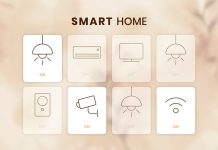This is the era of technology; now, computers are owned by almost every household in the world. According to the states, the ownership of computers has doubled since 2005, and it will continue to grow. The growth rate of information technology has been recorded as 1,157% since 2005, and furthermore, by 2025, 78% of the population will be using the internet.
This means the demand for information technology is going nowhere. Moreover, all the tech industries spend 16 to 19 percent of their revenues on IT. The US spending on technology products, services, and staff was estimated at around 1.9 trillion US dollars in 2021.
Therefore, there is a high demand for IT professionals, and multinational organizations are looking for qualified IT members to bridge the gap and fill the new positions.
According to the research of Robert Half, these IT support jobs and technology experts are increasing their salaries to attract proficient professionals and to keep their most valued staff from leaving the IT support jobs and organizations.
What are IT Staff Augmentation Services?

As we head into 2024, many industries are dialed in for hiring new talent for IT jobs. According to the survey, 61% of managers said they plan to recruit new roles in 2024 and 34% of the managers said they plan to hire for the vacated seats.
Moreover, 90% of the managers said it is difficult to find new and competitive talent. Therefore, most of these industries and organizations consult with IT staff augmentation services for IT support jobs. These services allow companies and managers to find new external experts who can manage workloads efficiently and execute projects professionally without any long-term commitments.
Benefits of IT Staff Augmentation Services
The manager of an IT Company can benefit from these IT staff augmentation services in the following ways:
1. Cost Efficiency
If the manager partners up with these IT staff augmentation services, then he won’t have to worry about infrastructure expenses or problems when it comes to investing in the project. Strong hardware, cyber security measures, and top-notch software development tools are all consistently provided by these services.
2. Zero Recruitment Risks
It takes an average of six weeks to recruit a competent IT professional, and there is no assurance that they will perform and adapt well. These services will allow the manager to select the professional for your IT jobs that will easily adapt to the company’s environment.
3. Full Control
With complete control over the development process, the IT staff augmentation model allows the manager to establish objectives and goals that are critical to the company.
8 Best IT Support Jobs for Remote Workers
The IT industry is rapidly growing and it could be difficult to decide which path you should pursue with the abundance of career paths available. In this article, we will discuss the IT support jobs that are in demand these days. If you are one of those late-night keyboard warriors browsing for IT jobs near me on Google or any other search engine, then don’t worry, we have listed the best for you.
1. Web Designer

For web designers, there will likely be 19,000 positions annually on average during the next ten years. In May 2022, the typical yearly salary for designers of digital and online interfaces was $83,240.
By 2029, the demand for web designers would increase up to 8%. However, unlike other IT support jobs, it does not require formal education, although having a certification can provide a great advantage.
Companies demand web designer to optimize their visitors’ experience with their pages. You have to work to improve both specific assets that users interact with i.e. user interface (UI) and the other overall interaction with the webpage (UX).
2. Data Analyst

The number of data analysts working across IT support jobs is expected to rise by 25% by 2030 with 10,000 new job openings. The average salary of senior data analysts ranges from $120,400 to $287,600.
If you want to pursue your career as a data analyst then a certification can boost your skills and demonstrate to the employer that you have the required skills and knowledge to thrive at this job. Data analysts are in demand because companies want to enhance their analytical capabilities and find alternative ways to improve data collection and recording.
3. Network Administrator

Next on the list of most demanded IT support jobs is the network or computer system administrator. The average salary for a network admin ranges from $60,000 to $90,000 and an experienced admin with specialized skills can earn up to $100,000.
Network and computer systems administrators’ employment is expected to expand by 2% between 2022 and 2032, or almost as fast as the average for other occupations.
Over the next ten years, an average of 19,800 positions per year for network and computer systems administrators are anticipated.
4. Web Developer

According to the Bureau of Labor Statistics, the employment of web developers is estimated to grow 16% from the year 2022 to 2032. That is much faster than the average of all occupations.
The average salary of a senior web developer is $115,500-$160,000. In North America, there are 1.3 million web developer jobs available and more than 47,000 jobs have been created in the last two years.
To do this you must know programming fireworks, different design strategies to create the website, different languages like JAVA, and CSS, and knowledge to make user-friendly apps. Organizations demand these web developers to increase customer satisfaction by making effective webpages and websites.
5. Computer System Analysts

The role of computer system analysts is to study and operate computer systems to enhance their functionality. According to statistics, there will be a 9.6% increase in computer systems analyst jobs between 2022 and 2032. An estimated 51,100 jobs should become available during that time. For computer systems analysts, the median yearly salary is $102,240.
Computer system analysts have to train the other employees to stay up-to-date on the latest technology trends and find out the most effective system updates that are budget-friendly. Now companies want to rely on cost-efficient and user-friendly systems therefore, they are hiring more computer system analysts.
6. Technical Sales Engineer

These engineers specialize in selling technical products and offering post-sales support. To improve the sales of the product, they conduct thorough market research and get the feedback of the clients. A predicted 5,900 positions for sales engineers are available annually.
The average salary for a technical sales engineer is $108,530. Sales engineer employment is expected to increase by 5% for the next 10 years.
You have to deal with clients, attend exhibitions, and collaborate with other technical engineers. Companies get various benefits by hiring these technical sales engineers, as they help improve sales and generate desired profits.
7. IT Manager

Organizations that depend more and more on information technology (IT) services will need more managers of computers and information systems to plan and supervise their demands for computer hardware and software.
From 2022 to 2032, the employment of managers of computer and information systems is expected to expand by 15%, much faster than the average for all professions.
The yearly number of job openings expected for IT managers is around 46,900. You can earn up to 164,070 dollars yearly as an IT manager. To pursue your career as an IT manager, you would need a bachelor’s degree in computer science and related work experience.
8. Software Engineer

Software engineering is also one of the great IT support jobs in the technology world. It is estimated that there will be 153,900 positions available for testers, quality assurance analysts, and software engineers. For software engineers, the median yearly salary is $99,620.
You must know how to design, code, and investigate issues related to the software programs to qualify for this job.
Conclusion
You can choose the best-fitted job according to your skills from the mentioned IT jobs. These are the most demanded jobs by big organizations these days.
Read Also: High Paying Jobs in Consumer Services





